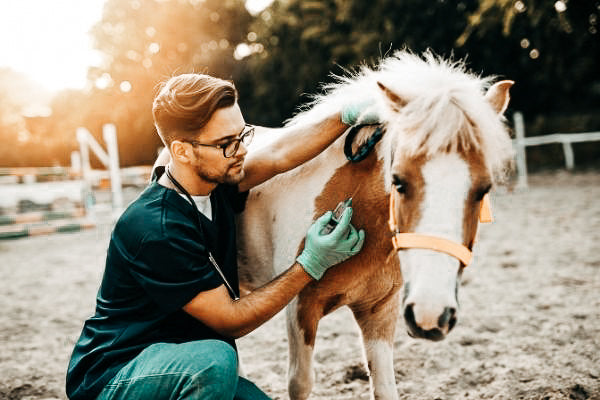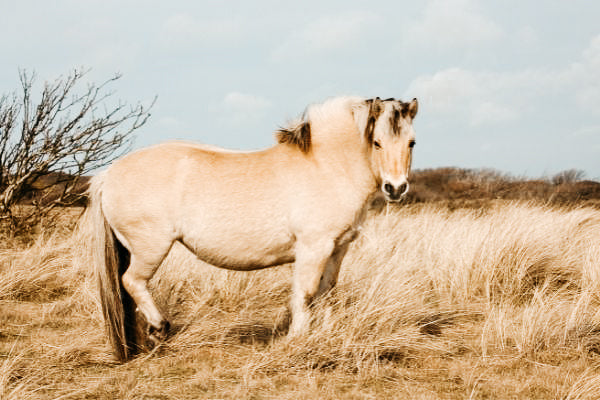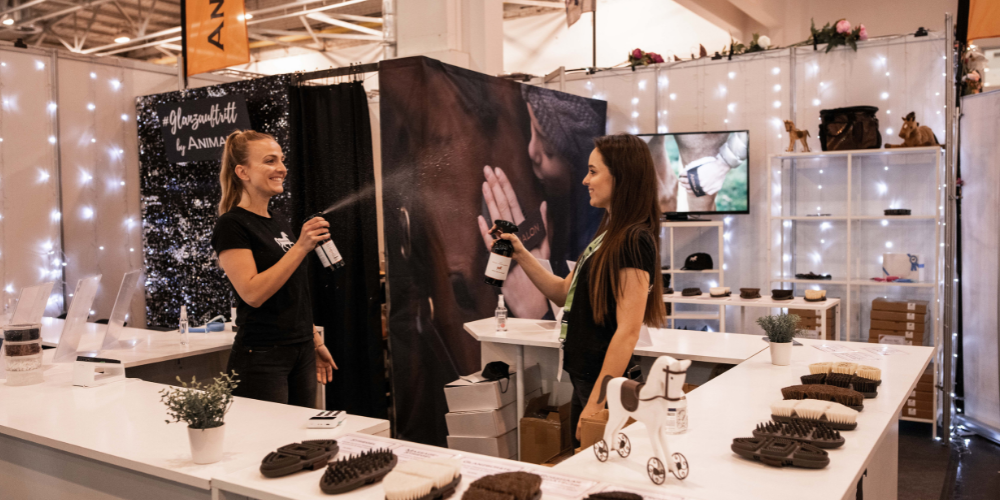
Equine influenza – a mutable virus that affects the respiratory tract
Coughing in horses can have many triggers. But the influenza virus is the primary carrier among our ungulates. In fact, it's not just horses that can quickly become infected with the flu virus. Donkeys, donkeys, mules and zebras are also very susceptible to this horse disease.
The high level of infection makes it possible to spread quickly and leaves some stable owners in a space crunch. If there is an influenza horse in the herd, action must be taken quickly to protect the other animals from becoming ill.
Because:
Even if your horse has received a horse influenza vaccination, this does not mean permanent protection! Constantly changing viruses can find a way to their respiratory organs, even though the horse has been vaccinated. This is precisely what makes influenza in horses so insidious. Nevertheless, there are good treatment successes for this horse disease.
Interesting topic? We would like to tell you everything you need to know about the disease.
Horse influenza - clearly defined
This horse disease is also referred to as horse flu, the equine influenza virus (EIV), Hoppegarten cough or simply the contagious horse cough. Transmission occurs through direct contact or through the air (e.g. b Expectoration during coughing/sneezing). You're probably familiar with droplet infection, right?
The upper and lower respiratory organs are infected by the virus. Similar to a severe flu in humans, horses cough badly. Unfortunately, secondary damage to the horse's respiratory system is not uncommon. If action is taken too late or not at all, pneumonia or myocarditis can be expected, and in the worst case, death.
Typical symptoms of equine influenza
- Nasal discharge
- intermittent, high fever (up to 42° C), which can last for days
- strong, sudden coughing attack right at the beginning of the horse's illness (up to 10x/hour)
- Horses cough initially dry and painful, later wet sputum
- noticeably labored breathing
- Reluctance to eat
- apathetic behavior
- weight loss
- swollen lymph nodes (difficulty swallowing)
Causes of the disease
For equine influenza, as already mentioned above, even the slightest contact with the neighbor in the box or a body secretion (a cough) from an infected horse is enough.
Whether in your own stable, at a workshop, on a trail ride or at a tournament - the infection occurs from animal to animal or comes from contaminated areas (shared paddock/meadow) or equipment (e.g. b cleaning supplies). The incubation period is relatively short. The first symptoms are noticeable after just 24 - 48 hours.
Short version Trigger:
- Contact with influenza horse
- Spreeding the viruses through the air
- infected areas e.g. b Bedding/equipment/clothing/skin of the owner or care staff
Diagnosis and treatment
If your horse becomes ill, the veterinarian should examine the horse promptly. Due to the characteristics of the horse disease that have occurred, he will probably arrange for a rapid test to be on the safe side. This can be easily done with coughed up secretions or with a swab that the vet takes from the horse's throat. The exact virus strain can now be determined in the laboratory. A blood test that shows certain antibodies also makes influenza clear in horses.
As with any virus, treatment is rather decimated. Basically, only symptoms are treated, long-term protection of the animal is advised and, if necessary, secondary infections (bacteria) are treated with antibiotics. In any case, biological veterinary medicines are beneficial. The sick animal should be separated from the rest of the population if possible. Lots of fresh air, rest and soft, warmed food (mash) can positively support convalescence. Inhaling would also be a helpful contribution. Depending on the severity of the disease, the veterinarian may give the horse some light exercise, e.g. b go for a walk or prescribe an absolute rest break.
Important:
Under no circumstances should you start training the animal again too early!
If horse flu is not completely cured, significant consequential damage can occur such as inflammation of the throat, chronic cough or even laminitis. Therefore, always follow the horse’s vet’s advice!
Can you take preventive measures?
As you may know, an influenza vaccination is mandatory for sport horses. The refreshment intervals should always be adhered to, especially for tournament goers, as they come into contact with many other horses. So if you travel a lot with your sweetheart, it makes sense to have your horse vaccinated.
But vaccinating horses alone does not provide 100% protection against infection. The viruses “mutate” rapidly and the influenza structure that occurs varies from horse to horse. It is therefore even more important to meet all of the ungulate's basic needs in order to sustainably strengthen its health (especially the immune system).
If you own a stable with adjusters, you can have a "pre-horse vaccination" or instruct you to present your vaccination certificate or undergo a health check. In addition, a precautionary quarantine of approx. 10 days sense.
Influenza in the stable - what now?
Sure, in large stables with a lot of changing operations, the likelihood of a flu outbreak is higher. Especially if competition horses are housed there or even tournaments are held. If an outbreak actually occurs, the horse should be separated, all adjusters should be informed and particular attention should be paid to a hygiene concept.
This includes: Whoever has contact with the animal (owner, staff.), must clean and disinfect themselves sustainably and are no longer allowed to share the equipment of the sick horse (cleaning equipment, manure tools, feeding utensils) with others. Runs also need to be fed several times. The equine veterinarian will instruct visitors/guest horses etc. to be closed due to equine influenza. better to lock. If the influenza horse has survived the disease and all other animals are well, the stable is released again.
Discover more posts

Norwegian Fjord horses – the pretty duns of the far north
There is hardly anyone who doesn't like the look of the compact ponies. The little Norwegians with their cheeky standing mane are actually more popular than ever. Among horse breeds,...
Continue reading
Mane and tail care - secure your horse's hair with ingenious tips
Who isn't impressed by the well-groomed horses in books, magazines, shows or television? Flowing, shiny long hair, open or braided into artistic braids, blowing in the wind of her graceful movement...
Continue reading
